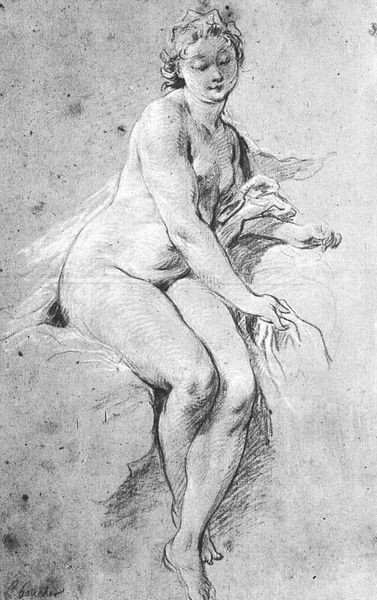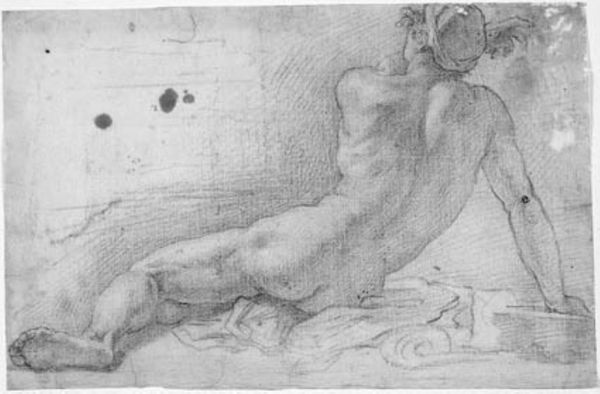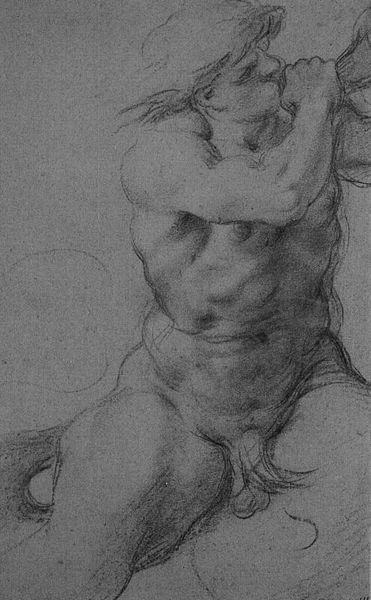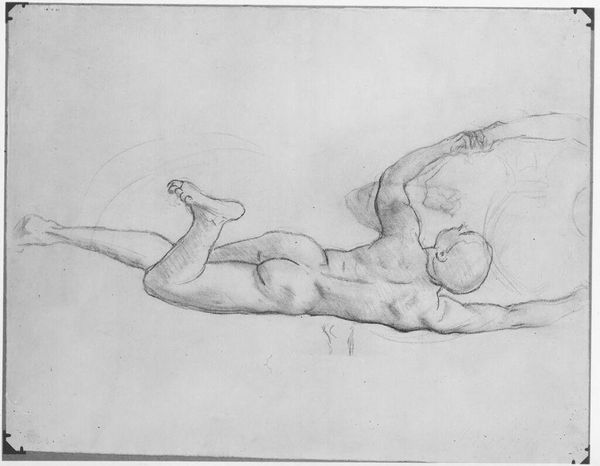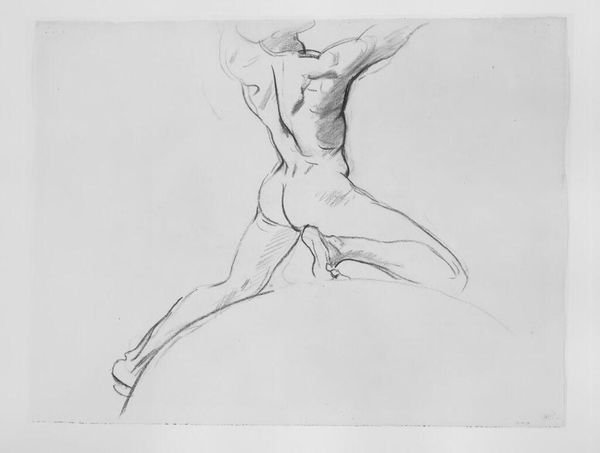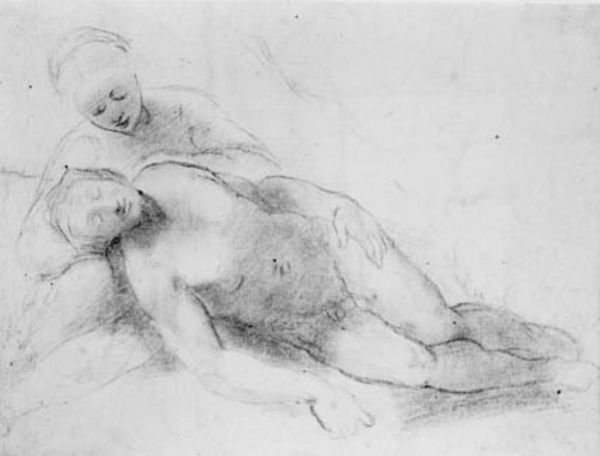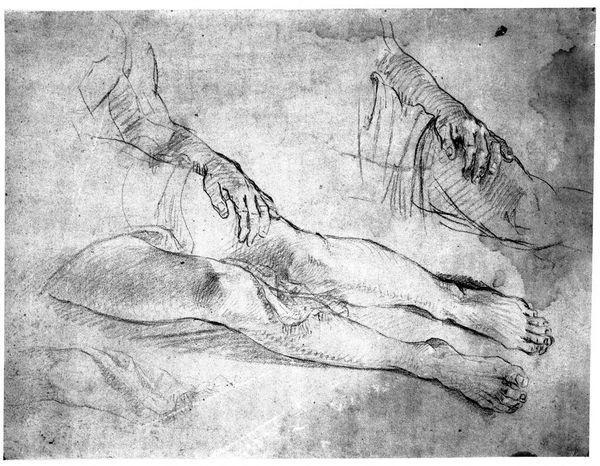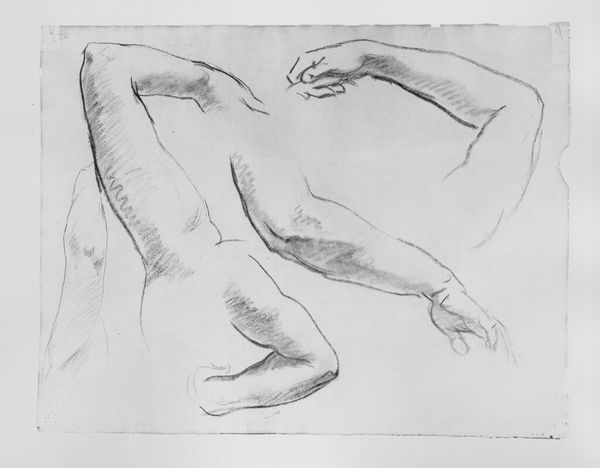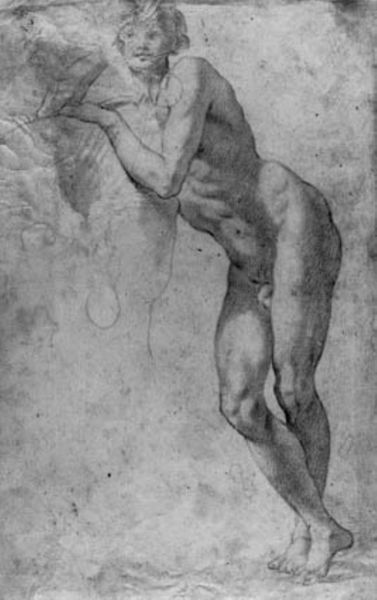
drawing, dry-media, charcoal
#
portrait
#
pencil drawn
#
drawing
#
baroque
#
charcoal drawing
#
dry-media
#
charcoal
#
charcoal
#
nude
Dimensions: 273 mm (height) x 398 mm (width) (bladmaal)
Editor: We’re looking at "Reclining male nude," a charcoal drawing by Francesco Montelatici, created sometime between 1601 and 1661. The figure’s pose strikes me as incredibly vulnerable, almost as if he's fallen. How do you interpret this work, especially considering the historical context? Curator: It's a powerful piece. When I look at this, I consider the societal constraints around depicting the male nude during the Baroque period. Think about the power dynamics inherent in representation. The male gaze, often attributed to a heterosexual male perspective, traditionally objectifies women. How might this depiction of a male nude challenge those established norms, even within its historical moment? Editor: So, is it a critique, or simply an exploration? Was Montelatici conscious of potentially subverting gender roles? Curator: That's the intriguing question, isn't it? We can't know his intentions for sure, but we can examine the context. Was Montelatici aware of early feminist discourses, nascent as they might have been? Or was he participating in a homosocial environment where the male form held different connotations? How does seeing it today through our contemporary lens impact its meaning? Editor: That’s fascinating. It adds a layer of complexity I hadn't considered. It’s not just about beauty or skill, but also about power and representation. Curator: Exactly. It encourages us to interrogate who gets to be seen, how they are seen, and what impact those images have on the broader cultural conversation about gender and identity. The charcoal, usually used for preparatory sketches, elevates the nude male form to an artistic statement, defying clear classification. Editor: I never thought a simple drawing could open up so many avenues for discussion! Thank you! Curator: My pleasure! Art is always speaking to its present. By grappling with the past, we enlighten our contemporary selves.
Comments
No comments
Be the first to comment and join the conversation on the ultimate creative platform.
